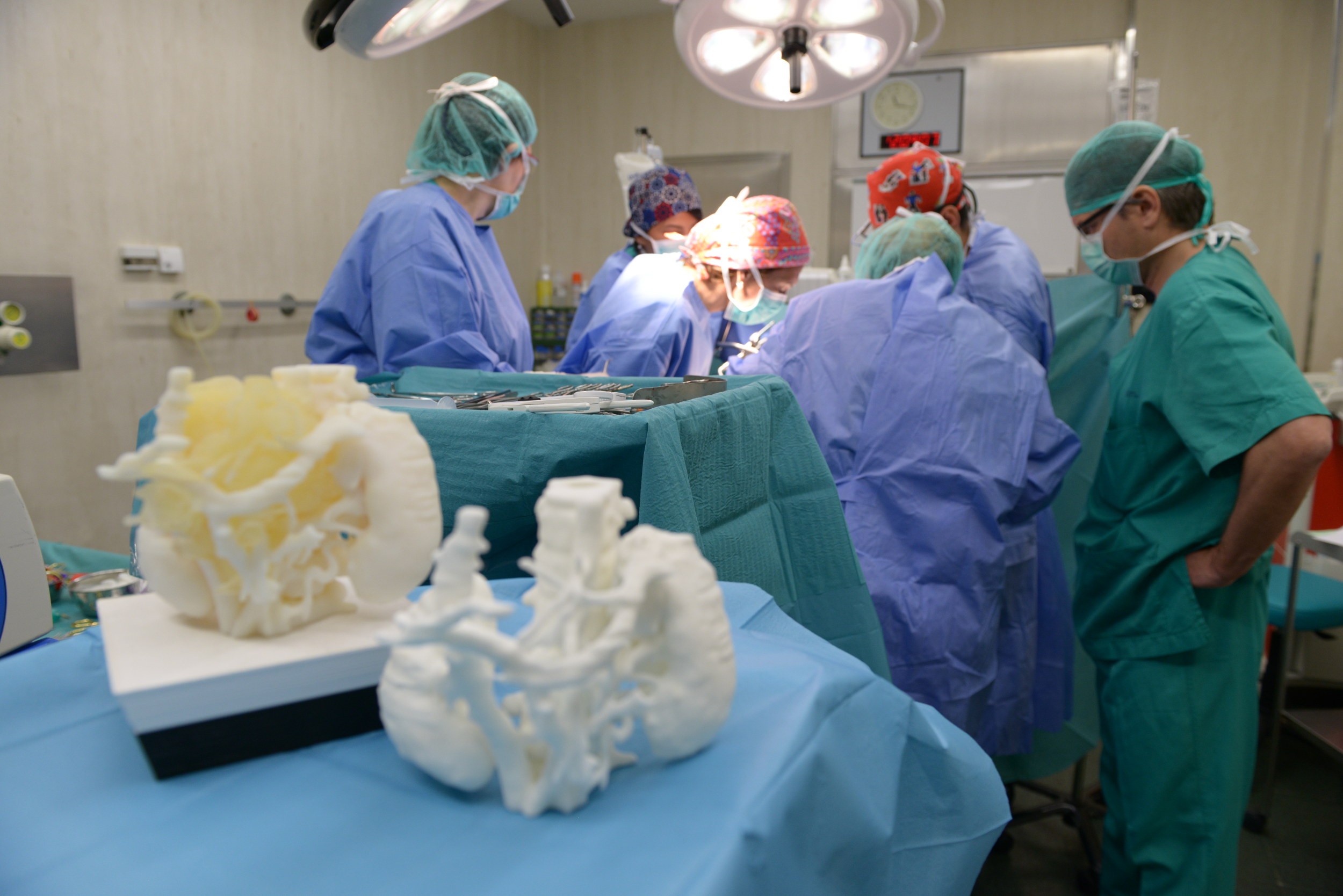Surgeons in Barcelona extirpate a tumour in a 5 year old child using 3D model
A team of surgeons at the Sant Joan de Déu Hospital in the Catalan capital successfully removed a tumour from a five year old child by first preparing and practicing the “highly complex” procedure on a 3D printed tumour. The child had neuroblastoma, a difficult cancer to extirpate because of the surrounding blood vessels and arteries. In such cases, testing the procedure in advance "is key" because it allows surgeons to study the most effective way of extracting the tumour without damaging other tissues, and to test the method before surgery. This has been possible thanks to the use of a 3D replica of the tumour.

Barcelona (ACN.) - A team of surgeons at the Sant Joan de Déu Hospital successfully removed a tumour from a five year old child by first preparing and practicing the “highly complex” procedure on a 3D printed tumour. The child had neuroblastoma, a difficult cancer to extirpate because of the surrounding blood vessels and arteries. In such cases, testing the procedure in advance "is key", say experts, because it allows surgeons to study the most effective way of extracting the tumour without damaging other tissues, and to test the method before surgery. This has been possible thanks to the use of a 3D replica of the tumour.
A 5-year old boy named Marc had been diagnosed with a common childhood cancer, neuroblastoma. The treatments given to him to help control the disease had been successful, but unfortunately a large tumour remained in his stomach area: a tumour that, up until recently, was considered inoperable.
Neuroblastoma is considered an "extremely aggressive" cancer that forms in nerve tissue and is diagnosed primarily in children during the first five years of life. The treatment involves surgical removal of the tumour, combined chemotherapy and / or radiotherapy.
However, the surgical removal of this tumour raises many difficulties because of its location. Neuroblastoma develops around blood vessels and arteries. This means that surgeons must proceed with extreme precision to extirpate the tumour cells without damaging the arteries and endangering the patient's life. In Marc’s case, there were so many blood vessels and arteries surrounding the tumour and organs, that it was deemed almost impossible to operate on.
Determined not to give up, a team of surgeons at the Sant Joan de Déu Hospital carefully planned the highly complex procedure to remove the tumour without damaging the surrounding arteries by reproducing and practicing the operation on a 3D simulation. In collaboration with the Fundació CIM, the technology centre of the Polytechnic University of Catalonia, BarcelonaTech (UPC), the team created a 3D replica of Marc’s neuroblastoma.
Using 3D models to trial the operation in advance "was key" in allowing doctors to identify the most effective way to tackle the tumour, and repeatedly rehearse the procedure, to perfect it before surgery. In addition, experts also pointed out this technique reduces the time of the operation, helps avoid complications and allows them to study how to remove the largest possible percentage of the tumour.
Thanks to the practice that they had on the 3D models, surgeons were able to complete a successful surgery on the 5-year old boy, who is now expected to make a full recovery.
First case of producing a 3D copy for this purpose
Practitioners have noted that this is the first use of 3D printing for this purpose. And although it has long been used in the field of maxillofacial surgery, for the reproduction of bones, its application on soft tissue is new.
In this particular case, the copy of the tumour was made using a technology that allows printing on two types of materials. Thus, a resin was used to simulate the organ and blood vessels in the affected area, and another material of a translucent and soft consistency was used to replicate the tumour. By using these two materials surgeons could rehearse removing the tumour without damaging the vessels and organs.